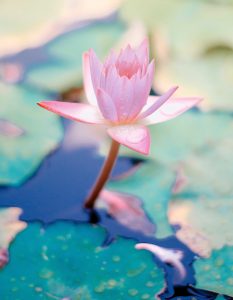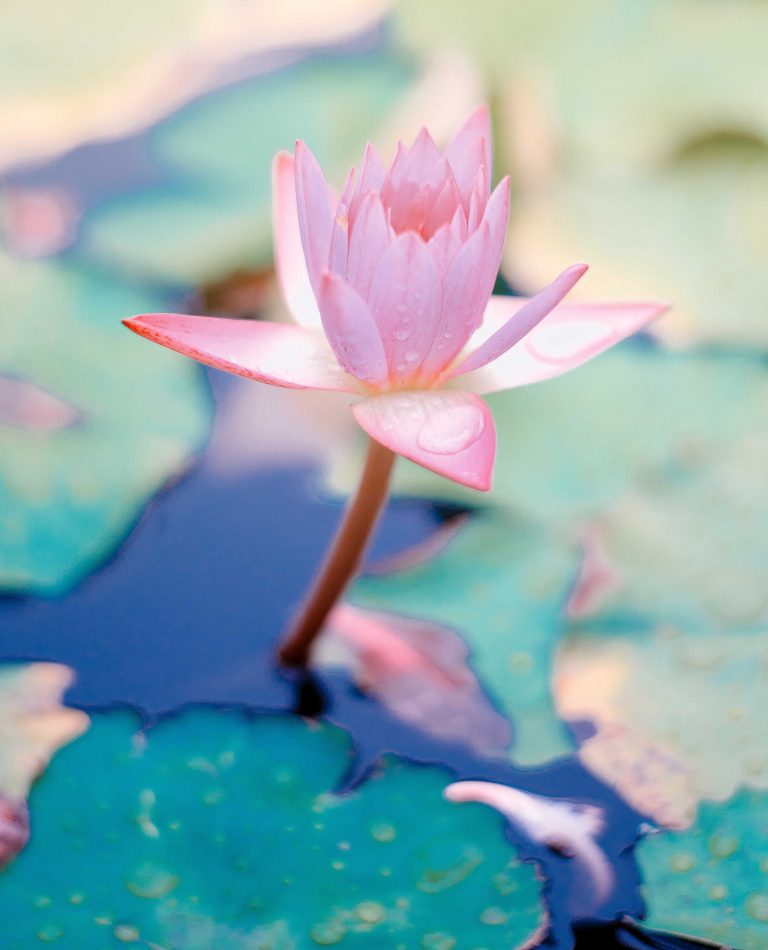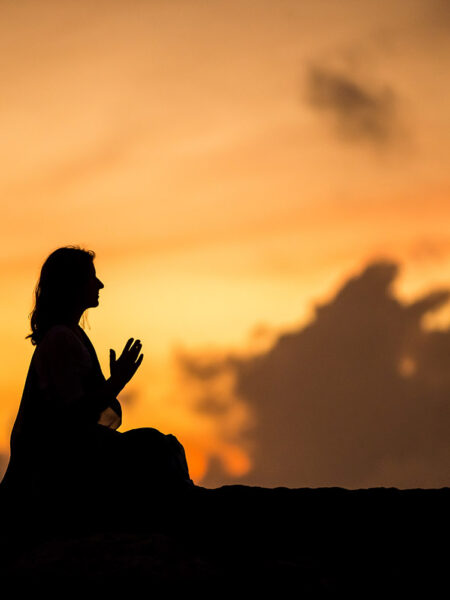
Different stages of meditation and how to begin meditating
(Writings by Sri Chinmoy)
Proper Breathing: The first stage of entering into meditation is breath control. We try to breathe in as slowly and quietly as possible. There are two breathing exercises below that you can try. Once we have learned breath control, we then use the breath in ways to develop the power of concentration.
Concentration: Concentration means inner vigilance and alertness. There are forces all around us—fear, doubt, worry and so on—and when we learn how to concentrate it is very difficult for these hostile forces to enter into us. When we concentrate, we focus our attention on one particular thing. We feel the power of concentration coming from the heart entre and then going up to the third eye. With the power of light inside our concentration, we enter into the object of concentration and identify with it.
Meditation: When we meditate, we expand ourselves. Meditation is like going to the bottom of the sea, where everything is calm and tranquil. On the surface there may be a multitude of waves, but the sea is not affected below. In its deepest depths, the sea is all silence. When we start meditating, first we try to reach our own inner existence, our true existence—the bottom of the sea. Then, when the waves come from the outside world, we are not affected because inside us is solid peace. Thoughts cannot touch us , because our mind is all peace, all silence, all oneness.
Ten Basic Tips for Meditation.
1. Individual meditation: it is better to do your individual daily meditation alone. An exception to this would be if your partner also meditates using the same techniques.
2. Group meditation: if you have the opportunity to meditate with a group once a week, this will definitely give you inspiration and add strength to your own individual meditation.
3. Incense: the fragrance of incense purifies the air that we breathe and creates a subtle and inspiring atmosphere. There are types of incense that are smokeless, as there are essential oils that have the same effect.
4. Keeping the spine straight: it is important to keep the spine erect and the body relaxed and comfortable. If you are uncomfortable, the body will constantly change its position. Allow your inner being to take you to a comfortable position, then maintain it. It is not advisable to meditate lying down as this encourages sleep consciousness.
5. Physical exercise: If you feel restless before a meditation, it may be helpful to do some hatha yoga exercises to calm the mind. Otherwise it is better to exercise after your meditation.
6. Open eye meditation: in the beginning it is difficult to maintain alertness while meditating with the eyes closed all the time. It is best to choose an external object to concentrate on—a flower or candle flame, for example—and keep the eyes open and relaxed for part of your meditation. In this way you are focusing your conscious awareness both on the physical plane and on the inner plane
7. Best time and duration of meditation: The best time to meditate is early in the morning when the day begins. The length of meditation depends on how long we can maintain the power of our concentration. For a beginner this is usually 15-20 minutes.
8. A place to meditate: it is good to have a special place to meditate in your home such as a corner of a room, where you can place your meditation cushion, candle or flower and burn your incense.
9. Music: the right kind of music—music that elevates our consciousness—can help to create a positive meditation environment. If you are disturbed by noises in the environment or don’t have a particularly peaceful place to meditate, then playing music can definitely be helpful.
10. Eating: it is best to meditate on an empty stomach, or two hours after eating. The body has thousands of subtle nerves that become heavy after eating. These subtle nerves transport the meditation energies, which cannot function when affected by food.
Meditation Exercises to Try
 Find a quiet, comfortable place to meditate. While trying these exercises you should keep your spine straight and your body relaxed. It is fine to sit in a chair or on the floor with a cushion or meditation stool.
Find a quiet, comfortable place to meditate. While trying these exercises you should keep your spine straight and your body relaxed. It is fine to sit in a chair or on the floor with a cushion or meditation stool.
As we have noted, breath control forms the basis of a good meditation. We use the breath to remove some of the obstacles that block our ability to meditate and to build a solid platform for developing the intensity of our concentration.
Exercise 1: Breath Purification
When you breathe in, try to feel that you are bringing into your body peace, infinite peace. The opposite of peace is restlessness. When you breathe out, try to feel that you are expelling the restlessness within you and also the restlessness that you see all around you. When you breathe this way, you will find restlessness leaving you.

After practising this for a few times, please try to feel that you are breathing in power and tremendous cosmic energy from the universe. Feel that there is not a single place in your body that is not being occupied by the flow of cosmic energy. And when you exhale, feel that all your fear and all the rubbish inside you is coming out of your body.
After doing this a few times, feel that what you are breathing in is joy, infinite joy, and what you are breathing out is sorrow, suffering and melancholy.
Exercise 2: Slowing the Breath
Try to breathe in as slowly and as quietly as possible. Then you will see that your meditation will be deep and your mind will be very calm and quiet.
Then imagine something very vast, calm and quiet. When you start meditating, feel that inside you is a vast ocean and that you have dived to the bottom, where it is all tranquillity. If you can identify yourself with this vast ocean, with this flood of tranquillity, then it will be extremely easy for you to meditate.
Exercise 3: Music and Breath
The best way to become one with soulful music is to have the firm inner conviction that while you are breathing in, the breath is immediately entering directly into your soul. And with the breath, you have to feel that the Universal Consciousness, divine Reality, divine Truth is also entering. Then, when you breathe out, try to feel that you are breathing out the ignorance that is covering your soul. Feel that the veils of ignorance are being lifted and discarded. If you can consciously imagine and feel this, it is the best way to become one with soulful music.
“Meditation is our soul’s cry for our life’s perfect perfection.” Sri Chinmoy



